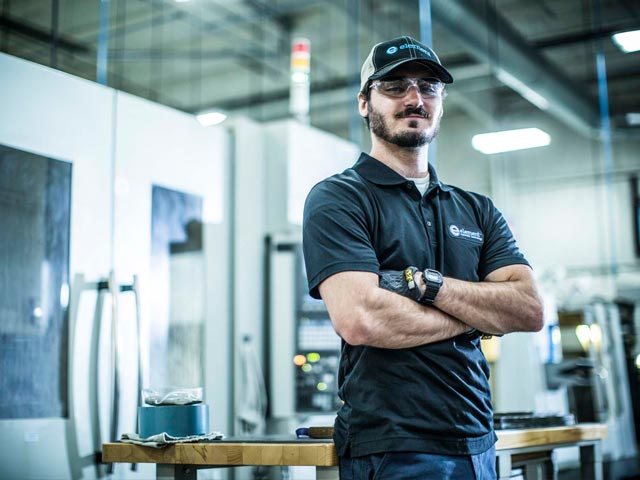Carbon Fiber Testing: Five Tips for Machining Carbon Fiber

By Engaged Expert
Ryan CastellsRyan Castells is a highly experienced specialist in the material behavior of both PMC and CMC materials within the Aerospace sector.
The use of Carbon Fiber Reinforced Polymers (CFRP) is growing in many industries. As a result, there is a higher demand for mechanical testing and carbon fiber testing of composite materials.
What is carbon fiber testing?
Carbon fiber testing is a set of reinforced polymers, more commonly referred to as carbon fiber. Researchers use various tests to characterize the properties of carbon fiber composites. The testing results are used to aid the manufacturer's decisions in selecting and designing material composites and manufacturing processes for both safety and integrity purposes.
To achieve accurate and repeatable results, precisely machined test specimens are required. Due to the nature of the material, carbon fiber testing using composite machining presents machine shops with new challenges compared to machining traditional materials like metals.
Waterjet
Waterjet cutting is a fast and efficient way to cut carbon fiber composites. One advantage of waterjet cutting is that no special tools are required. It is best to drill a starting hole; otherwise, the waterjet can cause delamination. When tight tolerances are required, it may be best to waterjet the part oversized and machine it to the final dimensions.
Milling
Machining of carbon fiber composite is generally done with a router; however, standard metal machining methods can be used. Machining carbon fiber composite requires higher spindle speeds than metals but lower feed rates. The feed rates need to be adjusted to minimize the heat in the part while machining. Carbon fiber has a low thermal conductivity, and the majority of the heat remains in the part since there are no chips to help dissipate the heat when machining. This heat from cutting can cause damage to the resin. Since coolant might not be permitted when machining carbon fiber composite, the tool path, and tool must be used to control the heat in the part while machining. Additionally, the fracturing of the fibers creates considerable abrasion on the cutting tool, so special tooling is required when machining carbon fiber composites (see below).
Tooling
Carbon fiber is abrasive and will wear down tools quickly. When a tool loses its sharpness, it can catch fibers and pull them from the part instead of cutting them. To avoid this, tool life must be monitored during machining as cut quality will decrease quickly. The best way to do this is to monitor the machining time on the tool and change it before it becomes dull.
There are several types and shapes of cutters for different applications, but they are generally made from two materials: carbide and polycrystalline diamond (PCD). Carbide provides good wear resistance but is more applicable to smaller jobs. PCD cutters offer better wear resistance and are the cutter of choice for several composites machine shops. However, the benefit of PCD cutters does come at a significantly higher cost compared to carbide.
Diamond-coated grinding wheels are also a staple of the well-rounded composite machine shop. They allow precise dimensional control, reasonable tool life-expense ratio, and effective heat management.
Drilling
Drilling is a problematic machining procedure on carbon fiber composites. Composite is constructed of layers of material that could easily splinter or delaminate during machining. Drilling speed must be adjusted based on the size and depth of the hole. Special drill bits designed specifically for carbon fiber help eliminate delamination during drilling.
Dust
The dust from machining carbon fiber composites is conductive and can migrate into electronics and shorten them. Hence you must vacuum the dust frequently when machining to avoid causing damage to the machine. Dust can also irritate the skin (similar to working with fiberglass). It is good practice to wear gloves and a dust mask when machining CFRP.
Recap
Although it sounds complex, machining carbon fiber composite is not as difficult as it may seem from the first impression. Once you understand the basics, carbon fiber composite can be machined to the tight tolerances required for material testing without problems.
For further advice on our composite testing and carbon fiber testing capabilities, get in touch with our experts and learn more.
Find related Resources
Related Services
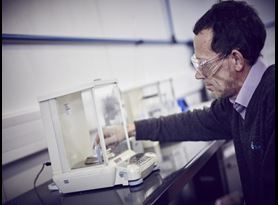
Polymers Testing
Element performs a range of mechanical, electrical, flammability tests and utilizes thermal analysis tests to characterize the composition of polymers and composite materials.
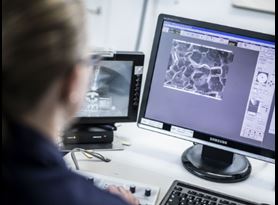
Composite Material Testing
Element’s composite raw material testing helps manufacturers understand the physical, thermal, and mechanical properties of the constituents used to create their composite product.
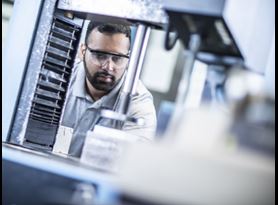
Understanding Composite Compression Test Methods
While there is no set standard for testing the compressive strength of composites, our experts can help you select the test methods that will generate the required result.
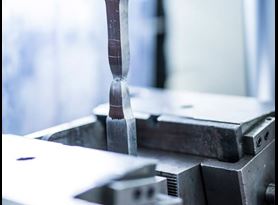
Tensile Testing
Element specializes in providing industry leading tensile testing services for a wide range of metallic and non-metallic materials.
